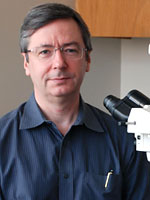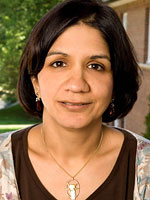PHILADELPHIA - Four professors from the University of Pennsylvania School of Medicine have been elected as members of the Institute of Medicine (IOM), one of the nation's highest honors in biomedicine. The new members bring Penn's total to 72, out of a total active membership of 1,610. Overall, the IOM named 65 new members this year and five foreign associates.
"We are proud that four of our most distinguished and accomplished scientists have been named to one of the country's leading institutions," said Dr. Arthur H. Rubenstein, Executive Vice President of the University of Pennsylvania for the Health System and Dean of the School of Medicine. "Having Penn Medicine colleagues elected to this esteemed body is an extraordinarily significant honor."
The IOM was established in 1970 by the National Academy of Sciences to honor professional achievement in the health sciences and to serve as a national resource for independent analysis and recommendations on issues related to medicine, biomedical sciences, and health.
The new Penn IOM members are:

Thomas Curran, PhD, is Professor of Pathology and Laboratory Medicine and an Investigator at the Abramson Family Cancer Research Institute at Penn and the Deputy Scientific Director at the Children's Hospital of Philadelphia Research Institute. Dr. Curran's research addresses the molecular basis of normal and neoplastic growth of the brain with the goal of uncovering new approaches for the treatment of pediatric brain tumors. He served as President of the American Association of Cancer Research in 2001 and on the Board of Scientific Advisors of the National Cancer Institute from 2000-2005. In 2005 he was elected to the Royal Society.
 Garret A. FitzGerald, MD, is the McNeil Professor in Translational Medicine and Therapeutics; chair of the Department of Pharmacology; and director of the Institute for Translational Medicine and Therapeutics. Dr. FitzGerald's research takes an integrative approach to elucidating the mechanisms of drug action, drawing on work in cells, model organisms, and humans. He has contributed substantially to the development of low-dose aspirin as a therapy, and his team was the first to predict and then mechanistically explain the cardiovascular hazard from NSAIDs. His laboratory was also the first to discover a molecular clock in the cardiovascular system. Amongst his awards are the Harvey Medal, the Boyle Medal, the Taylor Prize, and the Cameron Prize. Dr. FitzGerald serves on the Peer Review Advisory Committee of the NIH, the Science Board of the FDA, and the Drug Forum of the Institute of Medicine.
Garret A. FitzGerald, MD, is the McNeil Professor in Translational Medicine and Therapeutics; chair of the Department of Pharmacology; and director of the Institute for Translational Medicine and Therapeutics. Dr. FitzGerald's research takes an integrative approach to elucidating the mechanisms of drug action, drawing on work in cells, model organisms, and humans. He has contributed substantially to the development of low-dose aspirin as a therapy, and his team was the first to predict and then mechanistically explain the cardiovascular hazard from NSAIDs. His laboratory was also the first to discover a molecular clock in the cardiovascular system. Amongst his awards are the Harvey Medal, the Boyle Medal, the Taylor Prize, and the Cameron Prize. Dr. FitzGerald serves on the Peer Review Advisory Committee of the NIH, the Science Board of the FDA, and the Drug Forum of the Institute of Medicine.
 Frederick S. Kaplan, MD is The Isaac & Rose Nassau Professor of Orthopaedic Molecular Medicine and Chief of the Division of Molecular Orthopaedic Medicine. Dr. Kaplan studies the molecular genetics of FOP and POH, rare bone disorders in which the body forms a second skeleton of heterotopic bone. This collaborative work, conducted with his colleague Dr. Eileen Shore, led to the discovery of the gene for POH in 2002 and for FOP in 2006. Dr. Kaplan co-directs the only center in the world devoted entirely to this work, has organized the medical and scientific communities worldwide on FOP and POH, and is recognized as the world's leading expert on genetic disorders of heterotopic ossification and skeletal metamorphosis. In 1997, Kaplan was awarded the first endowed chair in the nation for orthopaedic molecular medicine. Cited in 2006, as one of the15 people who make America great, Newsweek noted "the disease [FOP] was so rare, nobody wanted to deal with it until he came along."
Frederick S. Kaplan, MD is The Isaac & Rose Nassau Professor of Orthopaedic Molecular Medicine and Chief of the Division of Molecular Orthopaedic Medicine. Dr. Kaplan studies the molecular genetics of FOP and POH, rare bone disorders in which the body forms a second skeleton of heterotopic bone. This collaborative work, conducted with his colleague Dr. Eileen Shore, led to the discovery of the gene for POH in 2002 and for FOP in 2006. Dr. Kaplan co-directs the only center in the world devoted entirely to this work, has organized the medical and scientific communities worldwide on FOP and POH, and is recognized as the world's leading expert on genetic disorders of heterotopic ossification and skeletal metamorphosis. In 1997, Kaplan was awarded the first endowed chair in the nation for orthopaedic molecular medicine. Cited in 2006, as one of the15 people who make America great, Newsweek noted "the disease [FOP] was so rare, nobody wanted to deal with it until he came along."
 Amita Sehgal, PhD, is Professor of Neuroscience and an Investigator with the Howard Hughes Medical Institute. Dr. Sehgal studies the molecular and genetic components of sleep and circadian, or 24-hour, rhythms. Using the fruit fly, she and others have characterized a molecular clock present in flies and humans. Her lab has also developed the fly as a model system for studying sleep, showing that the rest phase in flies is a sleeplike state, helping to answer important questions about the essential need for sleep. Dr. Sehgal received the Stanley Cohen Senior Faculty Research Award and is Associate Editor of the Journal of Clinical Investigation and Associate Editor for the Journal of Neuroscience.
Amita Sehgal, PhD, is Professor of Neuroscience and an Investigator with the Howard Hughes Medical Institute. Dr. Sehgal studies the molecular and genetic components of sleep and circadian, or 24-hour, rhythms. Using the fruit fly, she and others have characterized a molecular clock present in flies and humans. Her lab has also developed the fly as a model system for studying sleep, showing that the rest phase in flies is a sleeplike state, helping to answer important questions about the essential need for sleep. Dr. Sehgal received the Stanley Cohen Senior Faculty Research Award and is Associate Editor of the Journal of Clinical Investigation and Associate Editor for the Journal of Neuroscience.
Penn Medicine is one of the world’s leading academic medical centers, dedicated to the related missions of medical education, biomedical research, excellence in patient care, and community service. The organization consists of the University of Pennsylvania Health System and Penn’s Raymond and Ruth Perelman School of Medicine, founded in 1765 as the nation’s first medical school.
The Perelman School of Medicine is consistently among the nation's top recipients of funding from the National Institutes of Health, with $550 million awarded in the 2022 fiscal year. Home to a proud history of “firsts” in medicine, Penn Medicine teams have pioneered discoveries and innovations that have shaped modern medicine, including recent breakthroughs such as CAR T cell therapy for cancer and the mRNA technology used in COVID-19 vaccines.
The University of Pennsylvania Health System’s patient care facilities stretch from the Susquehanna River in Pennsylvania to the New Jersey shore. These include the Hospital of the University of Pennsylvania, Penn Presbyterian Medical Center, Chester County Hospital, Lancaster General Health, Penn Medicine Princeton Health, and Pennsylvania Hospital—the nation’s first hospital, founded in 1751. Additional facilities and enterprises include Good Shepherd Penn Partners, Penn Medicine at Home, Lancaster Behavioral Health Hospital, and Princeton House Behavioral Health, among others.
Penn Medicine is an $11.1 billion enterprise powered by more than 49,000 talented faculty and staff.